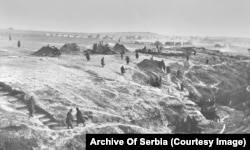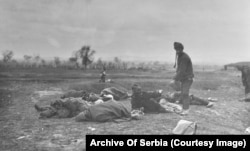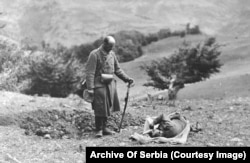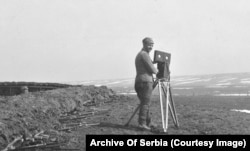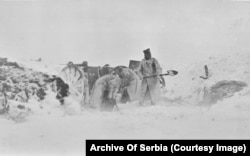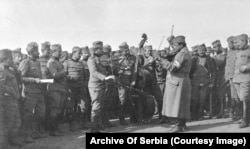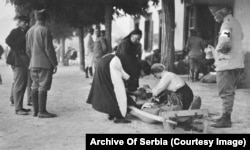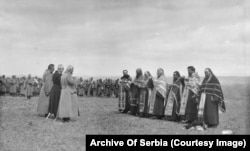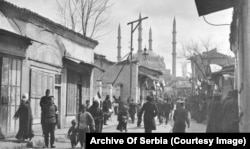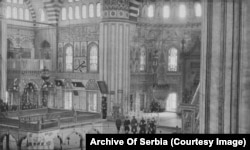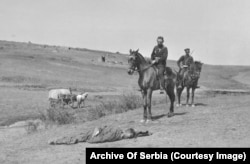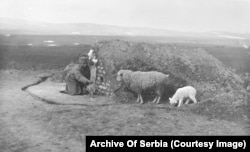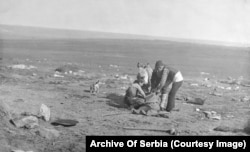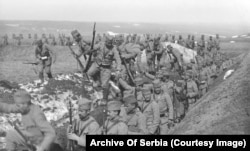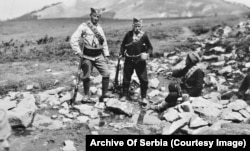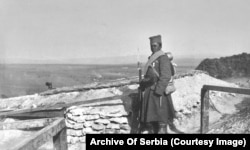An archive in Serbia holds rare images of the war that freed the Balkans from Ottoman rule 110 years ago. The photographer who made the striking pictures disappeared without a trace.
This image, of a captured Ottoman general during the 1912-13 First Balkan War, is one of scores of pictures of the conflict made by photographer Samson Chernov.
The First Balkan War was launched on October 8, 1912, by an alliance of the Orthodox Christian kingdoms of Bulgaria, Serbia, Greece, and Montenegro against the Muslim Ottoman Empire.
The conflict ended in disaster for Ottoman forces. Constantinople lost some 83 percent of its European territory, and more than 120,000 Ottoman soldiers fell in battle or died from disease.
The “Balkan League” armies of Bulgaria, Serbia, Greece, and Montenegro lost more than 52,000 men in the conflict.
High-quality photographs of the war are rare, but in the State Archives Of Serbia in Belgrade, crystal-clear images by Chernov bring the conflict to life.
Chernov was a Jewish-Russian painter from Ryazan, near Moscow, who first made his name in photography documenting the 1904-05 Russo-Japanese War.
The artist arrived in Serbia around the outset of the First Balkan War as a correspondent for Russian and French publications.
Chernov quickly made an impression on the Serbian forces he was embedded with for his bravery in battle, as well as “infernal impertinence” in the face of wartime military regulations.
A contemporary described the photographer as a “strange and mysterious” man who caused a scandal by bringing his “fat and full-blooded Hungarian” lover with him to the front lines.
As well as his work at the front, Chernov also made the most of access the conflict gave him to everyday life in the cultural goody bag of the Balkans.
Chernov was reportedly known for staging some of his battlefield photos.
Such practices were commonplace among war photographers of the era, when cumbersome and slow cameras made candid photos of fast-moving conflict all but impossible.
Most of Chernov's photos, however, appear to capture authentic moments from the war, which reshaped Southeastern Europe.
A Serbian historian called Chernov's photos "one of the most important segments of Serbian history preserved on photographic paper."
After the First Balkan War, Chernov remained in the Balkans and covered World War I. In 1916, he converted to Orthodox Christianity.
The last information recorded of Chernov was by a contemporary, who described seeing him in Thessaloniki, Greece, during World War I "in a fantasy-like Russian-style uniform. No one has seen him ever since."


